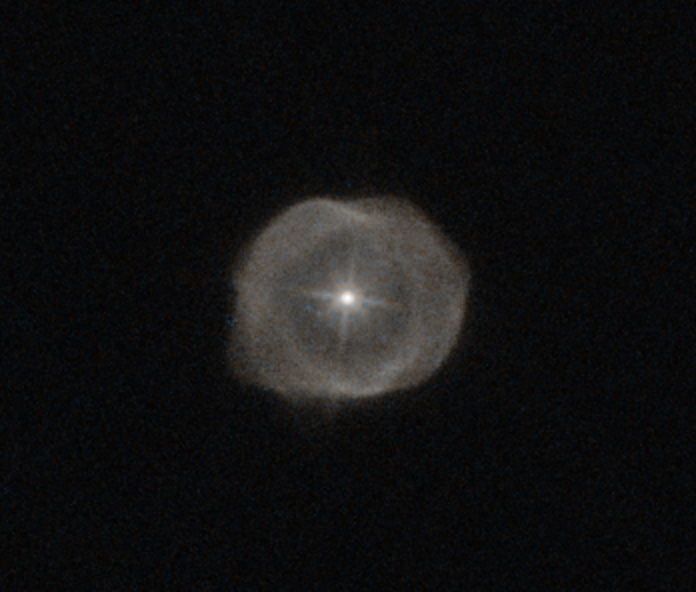
Hen 2-131 (2013)
This is now the tiniest planetary nebula I’ve found in the archive, being about 30% smaller than Me 2-1, which makes it the clear victor in diminutiveness.
It’s named after Karl Gordon Henize who, besides having his own catalogue of various objects, was also an astronaut. He flew on Challenger but not on that fateful final mission. Instead, he ended up losing his life at Mount Everest due to the misfortune of being susceptible to fluid accumulation in the lungs (HAPE) at extreme altitudes. Truly an ironic end for such a man but it sounds like he lived a full life.
Oh, the nebula? It’s not much to look at, I suppose. It’s interesting to me that there are references to this object as far back as 1893 but it’s not because they knew there was a nebula there. Spectroscopy opens the door to mystery and here you are looking at the mystery resolved through the eyes of Hubble 130 years later. Of course, it didn’t take that long for astronomers to figure out that it was a planetary nebula. Henize had it figured out in the 60’s but speculated that the slightly uneven intensity indicated that it was possibly bipolar. Nope! Nothing so interesting. Just a sphere with a few perturbations here and there.
Here’s the list of data. Not that it matters much since it turned out pretty much a gray blob.
Red: hst_06119_75_wfpc2_f814w_pc_sci
Green: Pseudo
Blue: hst_06119_75_wfpc2_f555w_pc_sci
North is up.
Copyright information:
Hubble data is public domain, but I put a lot of work into combining it into beautiful color images. The minimal credit line should read: NASA / ESA / J. Schmidt

This work is licensed under a Creative Commons Attribution 3.0 Unported License.


